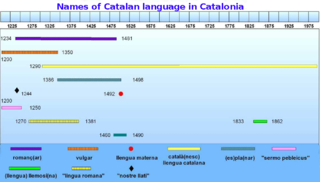
Josep Puig i Cadafalch was a Catalan Modernista architect who designed many significant buildings in Barcelona, and a politician who had a significant role in the development of Catalan institutions. He was the architect of the Casa Martí, which became a place of ideas, projects and social gatherings for such well-known Catalans as Santiago Rusiñol and Ramon Casas.

António de Andrade, also known as António d'Andrade or Andrada, was a Jesuit priest and explorer from Portugal. He entered the Society of Jesus in 1596. From 1600 until his death in 1634, he was engaged in missionary activity in India. Andrade was the first known European to have crossed the Himalayas and reached Tibet, establishing the first Catholic mission on Tibetan soil.

This is a chronology of the early European exploration of Asia.

Fernando Tarrida del Mármol was a mathematics professor born in Cuba and raised in Catalonia best known for proposing "anarchism without adjectives", the idea that anarchists should set aside their debates over the most preferable economic systems and acknowledge their commonality in ultimate aims.

Ippolito Desideri, SJ was an Italian Jesuit missionary and traveller and the most famous of the early European missionaries who founded Catholic Church in Tibet. He was also the first documented Tibetologist and the first European to have successfully studied both Classical and Standard Tibetan.

The first names, or glossonyms, of the Catalan/Valencian language formed in a dialectal relation with Latin, in which Catalan existed as a variety. These names already expressed the relationship between the two languages. New names that related Catalan to Rome came about to dignify the Catalan language in the thirteenth century, though Latinists called it vulgar and the people planus, or pla.
Antoni Rubió i Lluch was a Spanish historian and intellectual, and a Catalan patriot influenced by the Catalan Renaissance. A Hellenist and a medievalist, he left his mark on the study of the Catalan presence in fourteenth-century Greece.

Rodolfo Acquaviva, SJ was an Italian Jesuit missionary and priest in India who served the court of Akbar the Great from 1580 to 1583. He was killed in 1583 and beatified in 1893.
Antoni Clarassó i Terès was a Spanish canon of the diocese of Urgell, treasurer-canon of the Cathedral of Barcelona, guest priest at the archdiocese of Tarragona (1588–1591), and vicar general of archbishop and viceroy of Catalonia Joan Terès i Borrull (1587–1599).
Old Catalan, also known as Medieval Catalan, is the modern denomination for Romance varieties that during the Middle Ages were spoken in territories that spanned roughly the territories of the Principality of Catalonia, the Kingdom of Valencia, the Balearic Islands, and the island of Sardinia; all of them then part of the Crown of Aragon. These varieties were part of a dialect continuum with what today is called Old Occitan that reached the Loire Valley in the north and Northern Italy in the east. Consequently, Old Catalan can be considered a dialect group of Old Occitan, or be classified as an Occitano-Romance variety side by side with Old Occitan.

Josep Maria Nadal i Farreras is Professor of History of Language at the University of Girona.

Murad Mirza was a Mughal prince as the second surviving son of Mughal Emperor Akbar and his mother was a royal concubine. He was raised by Salima Sultan Begum until age of 5. He was the maternal grandfather of Nadira Banu Begum, wife of Prince Dara Shikoh.

Sant Pere de les Puelles is a Benedictine monastery in the Sant Pere, Santa Caterina i la Ribera neighborhood of the Ciutat Vella district of Barcelona, Catalonia, Spain. The 10th-century building, Romanesque/Gothic in style, was declared a Bien de Interés Cultural landmark in 1931.

Montserrat Torrent i Serra is a Spanish organist.

Joan Bastardas i Parera was a Spanish Latinist and Romance philologist born in Barcelona. He was the son of the lawyer and politician Albert Bastardas i Sampere. He studied at the University of Barcelona, with Marià Bassols de Climent, and wrote a PhD dissertation on Medieval Latin syntax, for which he received the Antonio de Nebrija Prize (1951). He was also indirectly a student of the Swedish Latinist Dag Norberg.

The Sarrià Capuchins are a community of the Capuchins that settled in Barcelona in 1578 after a request of the Consell de Cent, and against the will of the king Philip II.
Josep Lluís Alay i Rodríguez is a professor of Asian history at the University of Barcelona and chief of staff of Carles Puigdemont. He is the director of the Tibet and Central Asia Observatory and lecturer in Contemporary History of Tibet and Mongolia. He was the first Catalan writer to have translated a text written in Tibetan language and was responsible for the publication of Les poesies d’amor del sisè dalai-lama del Tibet, of which he was the translator as well as author of the Prologue and Notes. In 2002 he recovered the written work of the Jesuit missionary Antoni de Montserrat and reconstructed his three-year journey through territories now comprised by India, Pakistan and Afghanistan. Since 2004 he has headed around ten projects of cooperation in Tibet, working in the spheres of education and health. He has vastly published on the Tibet question and his last works on this issue are Arrels del Tibet and Tibet, el país de la neu en flames.
The literature of Andorra is part of Catalan literature, that is, of literature in the Catalan language. It is the literature represented by the writings created in the Principality of Andorra or by Andorran authors.

Antoni Comas i Pujol was a literary historian and literary critic, member of the Institut d'Estudis Catalans and elected member of the Acadèmia de Bones Lletres. He married Dolors Lamarca with whom he had three daughters.

Antoni de Montserrat was a Catalan Jesuit trained in Portugal who in 1574 was assigned to the mission of the Portuguese colony of Goa, in India, from where he would travel for the most part of Central Asia and the Arabian Peninsula. This traveler and scholar recorded his travels in four manuscripts, of which only two are preserved, the Mongolicae Legationis Commentarius, in Latin, and Relaçam do Equebar, rei dos mogoras, in Portuguese, referring to his stay in the court of the great mogul Akbar.














